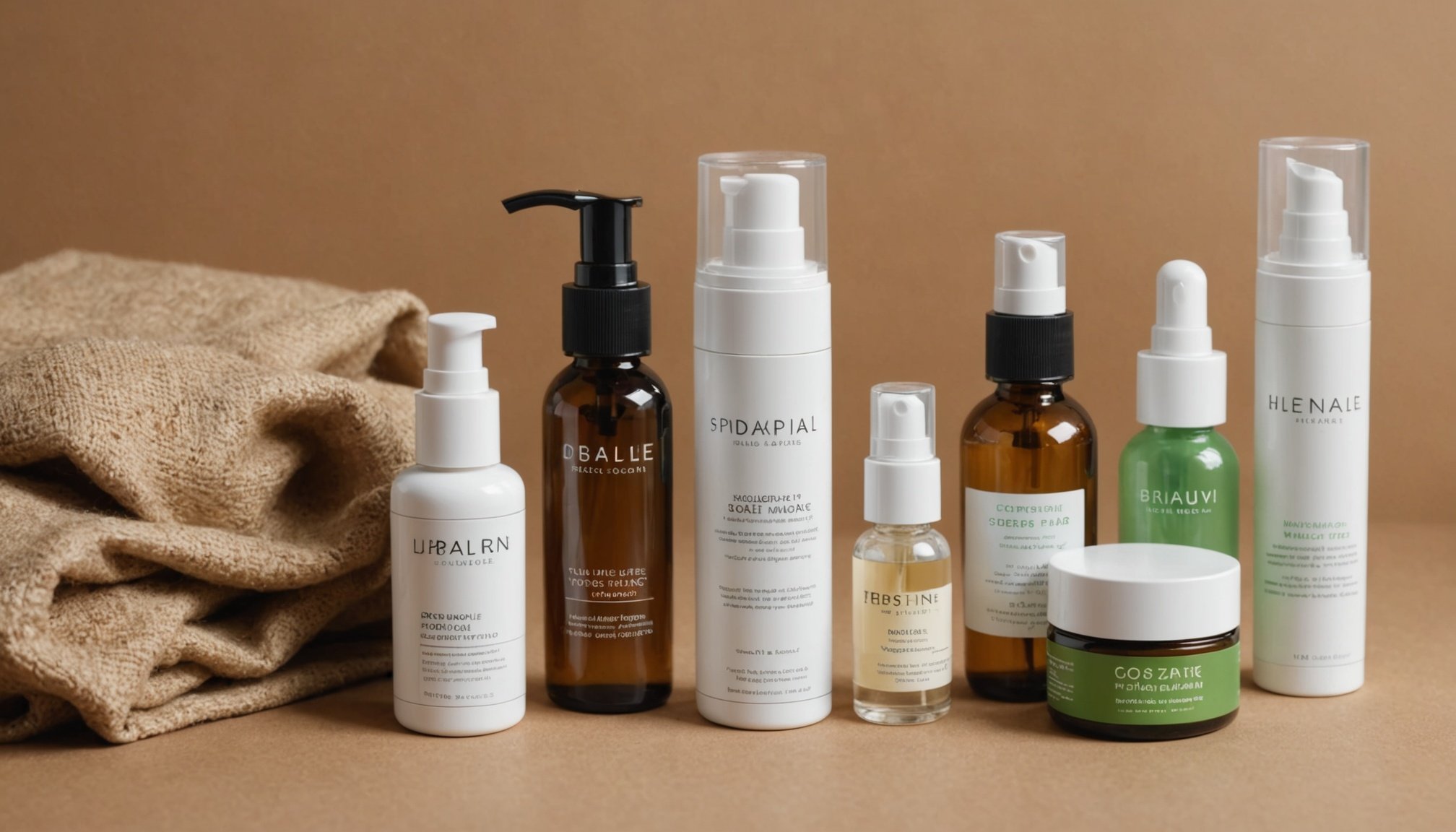Understanding Skincare Packaging Waste
Skincare waste poses significant challenges, primarily due to the volume of packaging materials used. Annually, millions of tons of skincare waste accumulate worldwide, contributing to landfill saturation and environmental degradation. Common packaging materials, such as plastic, glass, and metals, often end up discarded improperly, leading to adverse environmental impacts.
The environmental impact of these materials is profound. Plastic packaging, predominant in the industry, takes hundreds of years to decompose, releasing harmful chemicals along the way. The use of non-biodegradable packaging accelerates soil and water pollution, causing long-lasting damage to ecosystems. Consequently, the continuous accrual of skincare packaging waste compromises the health of our planet.
In the same genre : Top Eco-Chic Bags to Embrace This Spring: Your Ultimate Guide to Sustainable Fashion
Sustainable disposal methods offer a solution to mitigate this environmental impact. Implementing recycling programs and opting for biodegradable materials can significantly reduce the carbon footprint left by skincare packaging. Participating in such initiatives can help consumers and manufacturers alike contribute positively toward more environmentally friendly practices. By understanding the scope of packaging waste and its effects on the environment, consumers can make informed decisions that align with their commitment to sustainability.
Recyclable Skincare Packaging Options
Finding the pathway to a more sustainable beauty routine can begin with choosing products that use recyclable materials. The type of material used for packaging determines its ability to be recycled effectively.
Also to read : Essential Factors to Guide Your Choice of Eco-Friendly Jewelry
Materials That Are Commonly Recyclable
Skincare containers made from glass and aluminium are typically easier to recycle. Both materials often have high recycling rates and require less energy to process into new products. For plastic, aim for those marked with recycling symbols like numbers 1 (PET) or 2 (HDPE). These are widely accepted by recycling facilities and can be reborn as new packaging.
Local Recycling Guidelines
Understanding your local recycling regulations is crucial. Guidelines vary, meaning a material recyclable in one place might not be in another. Consulting your local waste management service can help you identify which skincare packaging is accepted and any special conditions for recycling.
How to Prepare Packaging for Recycling
Preparation is key. Empty and clean containers thoroughly to avoid contamination. Sorting the packaging according to material type can also improve the chances of successful recycling. Identifying your nearest recycling facilities allows you to responsibly dispose of packaging, ensuring it contributes to a circular economy. Using recycling symbols helps classify recyclable materials, making the process straightforward and clear.
Biodegradable Alternatives to Skincare Packaging
In the realm of skincare, choosing biodegradable packaging reflects a commitment to the environment. Several types of biodegradable materials are increasingly being used. These include plant-based plastics, which break down more quickly than their conventional counterparts, and recycled cardboard, often employed for outer packaging. Other innovative materials comprise bioplastics and compostable films, contributing to reduced environmental impact.
The benefits of opting for biodegradable options extend beyond mere environmental considerations. Generally, biodegradable packaging reduces waste, aligning with sustainable alternatives. It also often involves fewer resources in manufacturing, lowering carbon footprints. Consumers are more environmentally conscious, offering businesses an opportunity to enhance brand image and customer loyalty.
Several brands are paving the way by integrating biodegradable options into their product lines. Companies like Lush and Ethique offer products in eco-friendly packaging. Other pioneering enterprises employ mushroom packaging and sugarcane-derived plastics for their ranges. These brands demonstrate that sustainability and skincare can indeed go hand in hand.
Incorporating these alternatives into regular use ensures a conscious choice towards sustainability, highlighting the critical role of packaging in environmental preservation.
Creative Reuse Ideas for Skincare Packaging
Finding inventive reuse ideas for skincare packaging can be both eco-friendly and gratifying. By upcycling beauty products, you not only breathe new life into used materials but also contribute to reducing environmental waste.
Innovative Ways to Repurpose Containers
Repurposing containers involves utilising old jars and bottles creatively. These can become attractive organisers for office supplies or home décor. For example, a neatly cleaned moisturiser jar can serve as a compact plant pot or a storage solution for small trinkets.
DIY Projects Using Skincare Packaging
Engaging in DIY projects is an entertaining way to transform used packaging. Converting a serum bottle into a stylish vase or a candle holder showcases how imaginative one can get. Another popular DIY choice is redecorating lids with paint and using them as colourful coasters.
Benefits of Upcycling in Reducing Waste
Upcycling plays a crucial role in waste reduction. By rethinking ways to employ used containers, individuals actively decrease landfill contributions. This creative action improves waste management and promotes sustainable living. Additionally, upcycling educates others on valuing resources and encourages a mindset shift in waste usage.
Such creative initiatives not only inspire others but enhance personal living environments, proving that small changes can have meaningful environmental impacts.
Community Resources for Responsible Disposal
Engaging with local disposal resources is a pivotal step towards sustainable living. Many communities sponsor disposal programs and events aimed at recycling beauty product waste. These initiatives make it simpler for individuals to responsibly discard unwanted items. To locate such programs, check local government websites or community bulletin boards. Typically, these resources offer scheduled drop-off days or specially organised recycling fairs.
Participating in community recycling and cleanups not only aids in proper disposal but also fosters environmental consciousness. Taking part in these efforts enhances community well-being and often provides social opportunities. Volunteering for cleanups is a direct way to influence environmental change and advocate for a cleaner community space.
Moreover, collaboration with local beauty retailers is instrumental in promoting sustainable practices. Retailers often have their own recycling programs where consumers can return used beauty containers. Many stores offer incentives or discounts for participating in these schemes. By collectively working with these retailers, communities can drive responsible waste management efforts forward.
In summary, utilising local disposal resources, joining community recycling programs, and partnering with beauty retailers are crucial actions to improve and maintain environmental health. These collective efforts encourage a shift towards more sustainable habits.
Brands Leading the Charge in Sustainability
Sustainable Brands are becoming increasingly significant in today’s market, particularly those that focus on Eco-Friendly Skincare. Consumers are more conscious of their environmental impact, driving demand for products with minimal carbon footprints.
Overview of Brands Committed to Sustainable Packaging
Several Sustainable Brands have taken remarkable steps in adopting sustainable packaging methods to reduce waste and ecological impact. This includes using recycled materials, biodegradable packaging, and innovative refill systems that encourage reduced plastic usage. Such practices not only lower environmental impact but also resonate with eco-conscious consumers who are keen on responsible purchasing decisions.
Comparisons of Their Practices
When comparing Eco-Friendly Skincare practices, some brands stand out due to their comprehensive strategies. This includes sourcing ingredients sustainably, maximizing energy efficiency in production processes, and maintaining fair trade practices. Often, these brands are transparent about their supply chains, offering consumers insight into the environmental and social impacts of their products.
Initiatives that Promote Eco-Friendly Practices
Prominent initiatives in the industry involve partnerships with environmental organisations and participation in tree-planting campaigns. Additionally, brands are increasingly embracing transparency, sharing detailed insights about their practices with consumers. Through such efforts, they encourage their audience to support sustainable brands, fostering a community of environmentally responsible individuals who prioritize sustainability in their daily routines.
Statistics and Trends in Eco-Friendly Beauty
In recent years, sustainable trends in the beauty industry have gained considerable momentum. Consumers’ heightened awareness of environmental issues plays a significant role, with statistics showing a marked rise in preference for sustainable beauty products. For instance, a substantial percentage of customers now consider eco-friendly practices crucial when choosing skincare products.
Among the leading skincare brands, eco-friendly statistics reveal a clear trend towards environmentally conscious packaging. More brands are transitioning to recyclable or biodegradable materials, reflecting a growing commitment to reducing waste. This shift is not only consumer-driven but also in response to increasingly stringent regulations that aim to minimise environmental impact.
Looking forward, the future of sustainable practices within the beauty industry appears promising. As innovations in packaging and product formulation continue to evolve, brands are expected to embrace even more eco-friendly solutions. The demand for transparency in ingredient sourcing and production processes is anticipated to rise further, prompting companies to invest in sustainable development. These trends suggest a future where sustainability is not a niche but the norm, fostering a more environmentally-responsible beauty industry.











